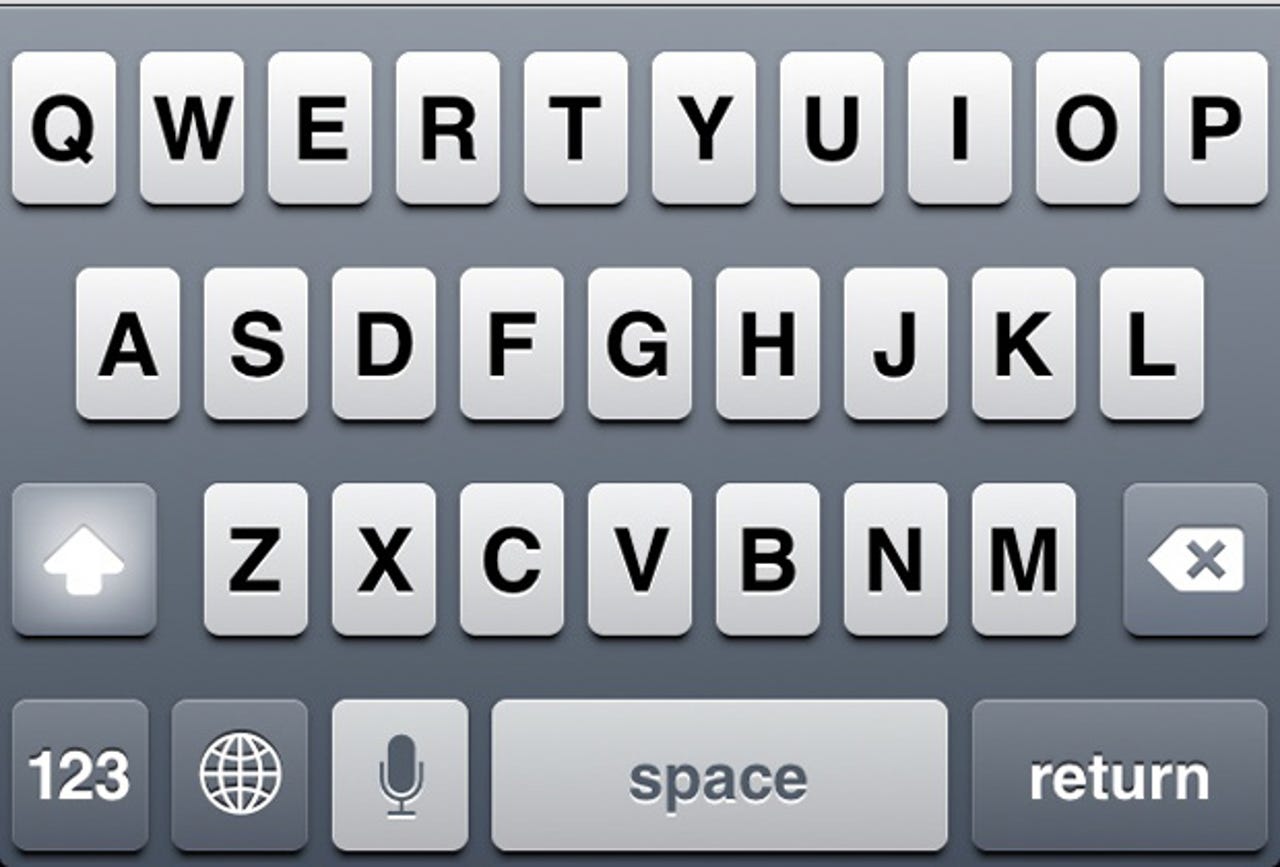The iOS keyboard is overdue for an upgrade


When the iPhone was announced in 2007, people loathed the on-screen keyboard. Blackberry users panned it and even I hated it at first. Then a week went by and I loved it. Many people can type faster on a virtual keyboard then they can on a tiny chiclet keyboard, and most would agree that more screen real estate is better value proposition that a physical keyboard that takes up half the surface of a device.
The problem is that the iOS keyboard hasn't changed much since the original iPhone debuted in 2007 -- and it drives me nuts. One of the advantages of virtual keyboards is that you can change them on-the-fly in software. Or so the theory goes.
As of iOS 6.1.2 Apple only slightly modifies the keyboard in its first-party apps:
- In Mail, it replaces the spacebar with a smaller space bar and dedicated "@" and period keys when typing an email address.
- In Safari, it replaces the spacebar with period, slash and ".com" keys when you're typing into the address bar field. But at the expense of the microphone/Siri button (I guess that Apple doesn't want us dictating URLs).
Here are a couple of things that Apple needs to change in the iOS keyboard, stat:
Lower-case
iOS provides zero feedback over which case I'm typing in. The iOS keys display upper-case characters whether I'm typing in upper-case or lower-case letters. It would be trivial for iOS to display lower-case characters when typing them, yet the iOS keyboard always shows upper-case characters. The Android keyboard has displayed the proper case for as long as I can remember. (Pictured above is a lower-case iOS keyboard -- only available on jailbroken devices running the Showcase app from Cydia.)
Dedicated Number Row
Apple should add a dedicated number row across the top of the iOS keyboard. The lack of a dedicated numbers row makes it difficult to enter strong passwords in iOS because you have to switch back and forth between the text and number keyboards. This could easily be a preference in the iOS keyboard settings. (Pictured above is 5-Row Keyboard, a jailbreak tweak only available in Cydia.)
But it's not just Apple that's been lazy in implementing extra iOS keyboards, developers have been slow to offer additional keyboard choices too. Luckily, some iOS developers use the UITextField, UITextView, and UIView objects in the iOS SDK to customize their keyboards. Good examples of apps that have purpose-built keyboards include:
Google Chrome adds four dedicated punctuation keys and a ".com" button.
Byword is a writing app that includes a keyboard accessory which shows word and character counts. You can even swipe it to show quick cursor arrows and common syntax used when writing in Markdown.
IAWriter is another writing app that includes a customizable fifth keyboard row.
Wolfram Alpha for iOS turns keyboards into an art form. The $2.99 app includes a default keyboard, a math keyboard, a Greek keyboard, and a symbol keyboard, to name a few.
It's time for Apple to show its plain-jane iOS keyboard some love.
How would you change the iOS keyboard?